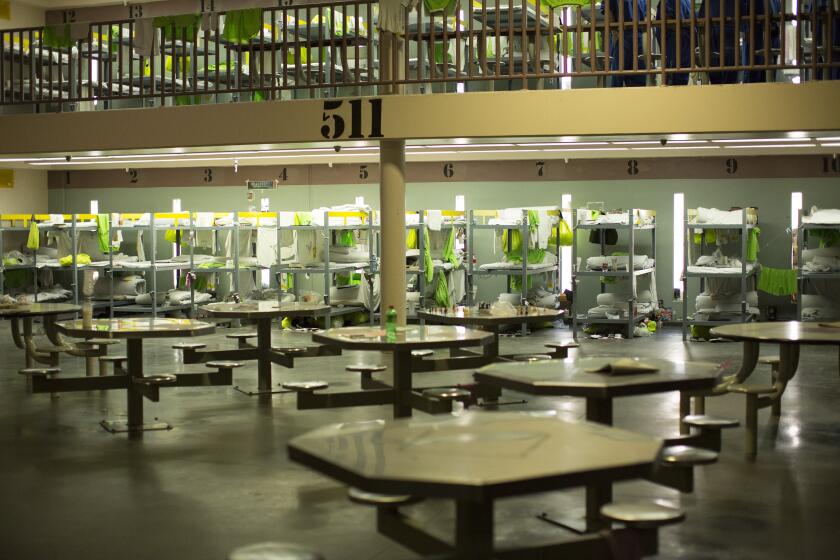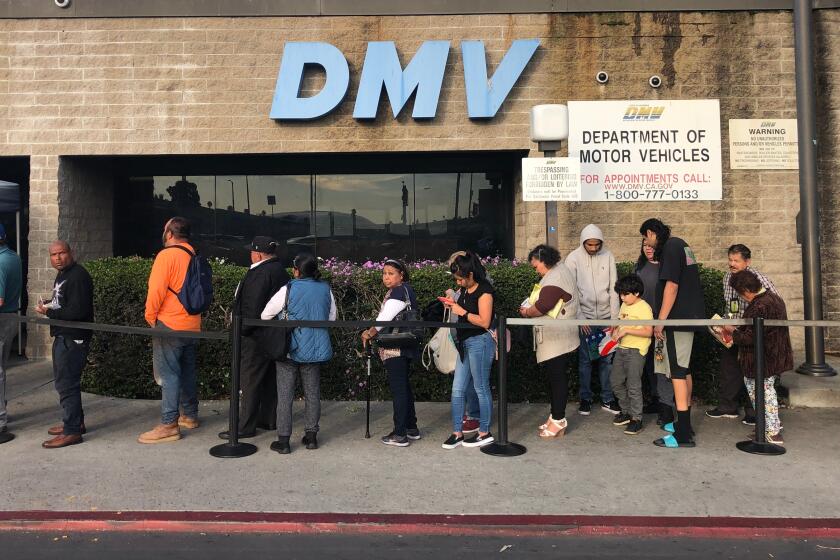Los Angeles unveils statue of Mexican singer-actor Antonio Aguilar
- Share via
Family lore says that when a young Antonio Aguilar arrived in Los Angeles hoping to make it big, he spent nights sleeping on benches at La Placita Olvera downtown.
The Mexican singer and actor, who died in 2007 at the age of 88, went on to make more than 160 records and more than 100 films, building a huge following on both sides of the border.
Thousands gathered Sunday to honor Aguilar during celebrations of Mexican Independence Day, when a statue of him was unveiled in a plaza close to the benches where he once slept.
“He made Mexicans feel proud of being Mexican in the United States,” said Martha Jimenez, 40, tears welling as the crowd cheered and cameras flashed. “He was a beautiful person.”
Los Angeles City Councilman José Huizar, who championed efforts to commemorate Aguilar and, like the late singer, was born in the Mexican state of Zacatecas, said Aguilar was “somebody who represents the American dream.”
A source of inspiration to generations of immigrants, he embodied the conviction “that with hard work … all is possible in Los Angeles,” Huizar said.
Known as “El charro de Mexico,” Aguilar helped popularize Mexican ranchera music in the United States and was awarded a star on Hollywood’s Walk of Fame.
He regularly filled venues when he performed his musical rodeo shows, which often featured his wife, Flor Silvestre, and their two sons, Antonio and Jose “Pepe” Aguilar — a major singer in his own right, with a star next to that of his father.
“I think that he did something very important for our community, to make Mexican Americans and Salvadoran Americans and Guatemalan Americans and everybody proud of their heritage and not to be embarrassed to speak their language,” said Antonio Aguilar Jr., who performed Sunday with other family members.
He said his father considered the United States his second home. The late Aguilar had tried to enlist in the U.S. military during World War II, but the recruiter told him it was not his war to fight, Aguilar Jr. said. “That’s why I feel so proud to have this statue of my dad in this city that he loved so much,” he said.
The area around La Placita Olvera, now part of El Pueblo de Los Angeles Historical Monument, has long been a gathering place for immigrants, some of whom still sleep on benches and visit neighborhood cafes. But critics challenged the decision to place Aguilar’s statue there, saying they wanted to preserve the historic character of the area where the city was founded, said Christopher Espinosa, general manager of the monument site.
The location eventually chosen, Placita de Dolores, is a more recent addition to the monument and does not contain major historic buildings, Espinosa said. He said he expects the statue to become a great tourist draw at its prominent location opposite Union Station, and that it will speak to the region’s Latino community, many of whom remain fans.
Among those who attended Sunday’s unveiling was Edgar Delgado, 38, of Downey. “It’s awesome that they are recognizing Mexican talent,” Delgado said. “He is a legend in our families. We grew up listening to his music and his movies.”
The 10-foot bronze statue, which shows Aguilar in his charro regalia atop a prancing horse, was designed and built by Dan Medina, a Los Angeles artist whose grandparents emigrated from Guadalajara, Mexico. It was inspired by one of Silvestre’s favorite photographs and sits on an 8-foot pedestal made of stone quarried in Zacatecas, Medina said.
He worked closely with Aguilar’s family to get every detail right. An early mock-up had the horse’s ears angled down — a sign, he was told, that the animal was stressed. Aguilar Jr. said his father’s horses were always happy when they performed. At his request, the ears now point forward.
Most of the about $200,000 cost was covered by private donors, including the University of Guadalajara Foundation and Sigue Corp., Huizar’s office said. The city contributed about $50,000.
Feliciano Serrano, a local doctor who also contributed $50,000 to the project, said his father was from Zacatecas. He too struggled when he first arrived in this country, even returning to Mexico for a time, Serrano said.
“Because of persistence and a dream is why I’m standing here today,” Serrano told the L.A. City Council during a presentation Friday. “That dream is encompassed in this monument to Antonio Aguilar.”
More to Read
Sign up for Essential California
The most important California stories and recommendations in your inbox every morning.
You may occasionally receive promotional content from the Los Angeles Times.










